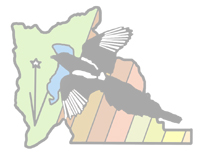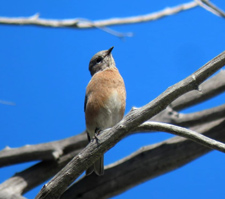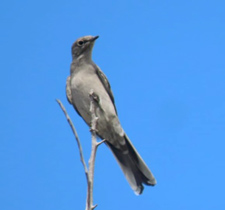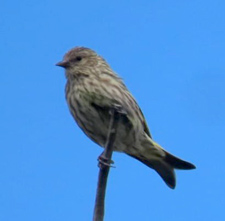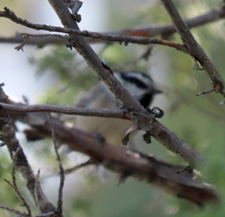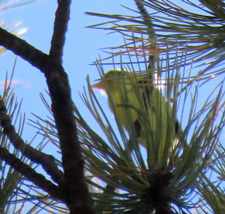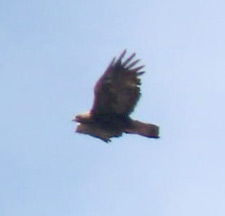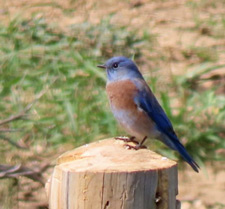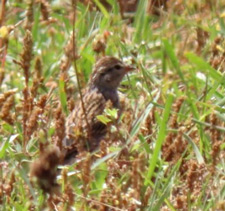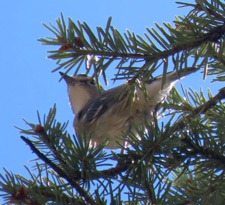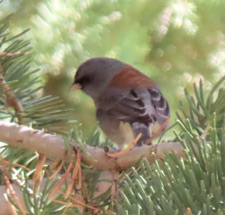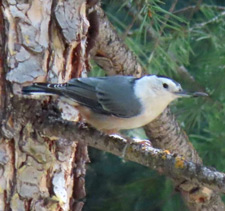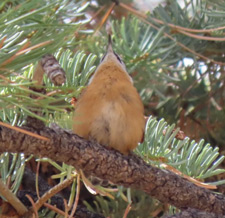|
October
2022
Contents
Monthly Meeting
Upcoming Field Trips
President's Message
Bird of the Month
Field Trip Reports
OCTOBER UCB MEETING:
Thursday Oct. 13th, 7 pm
The Big Sit Big Review
Join us either in person at the Bean Museum, or online via Zoom, for a casual
meeting where we'll go over what a Big Sit is, a little bit of history of our
Sit Circle, the craziest birds ever seen on our Big Sits, and how our sit went
this year! We may also review some winter species ID tricks and maybe talk about
a few other fun bird-related things.
FIELD TRIPS:
(Please bring walkie talkies set to 5-0)
Saturday, Oct. 8, 2022
Big Sit - Provo
Airport Dike
Dawn 'til dusk
Look for the sign up sheet. If you plan to attend there will be certain time
periods. You may sign up for more than one. We do need to make sure to add
the make and model of your.car so they will allow you to drive to the SW
corner of the dike where we will have our circle marked. It is a really fun
day! We usually begin at 6 am and go til dark.
Saturday, Oct. 22, 2022
Wayne County
Fieldtrip Capitol Reef
We will meet in Fruita in the parking lot
by the park at 9:30 am!!
38.285337,-111.246278
Google map
We will start birding around the area, then head up the road by the river
and campground. We will also drive the scenic drive a little ways through
Capital Reef. We hope to find our 22 species. If not we may have to search
some more areas outside the park. There are a couple campgrounds around
Capital Reef, or you could stay in Torrey. Another option is you could drive
down early to meet us. I'm excited to show you around! We will be staying
overnight in the motorhome. Bring a lunch!
|
Upcoming Fieldtrips for 2022
|
President's Message -
Oct 2022
by Machelle Johnson
|
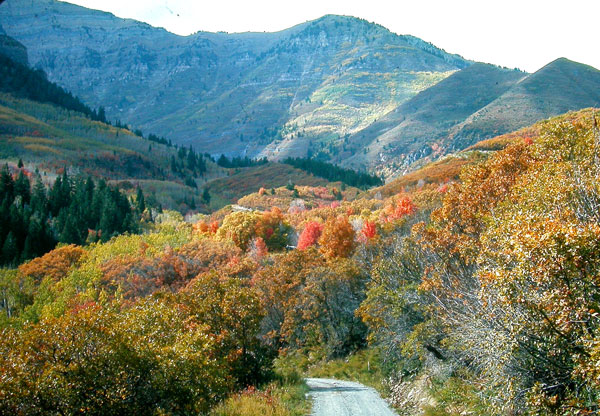
Alpine Loop
by Merrill Webb ©Merrill
Webb |
|
|
September didn't disappoint! It was
a beautiful month, maybe a little too warm, but the colors! Blue, blue sky,
green and purple mountains, leaves turning red, orange, and yellow, every
morning it looked more beautiful! Warm days, cool nights, I just love it!
I didn't see any of the reported rarities but I did get one more county checked
off, so I'm up to 20 now. Thanks again to Suzi and the field trips she's planned
and led.
October is the time when we start thinking about the new year. We won't do a
challenge next year, so if you have any field trip requests, or meeting topics
you are interested in bring them up at our October meeting. We would love your
input and to have lots of participation.
Thanks,
Machelle
,__,
(0,0)
/)_)
|
|
|
|
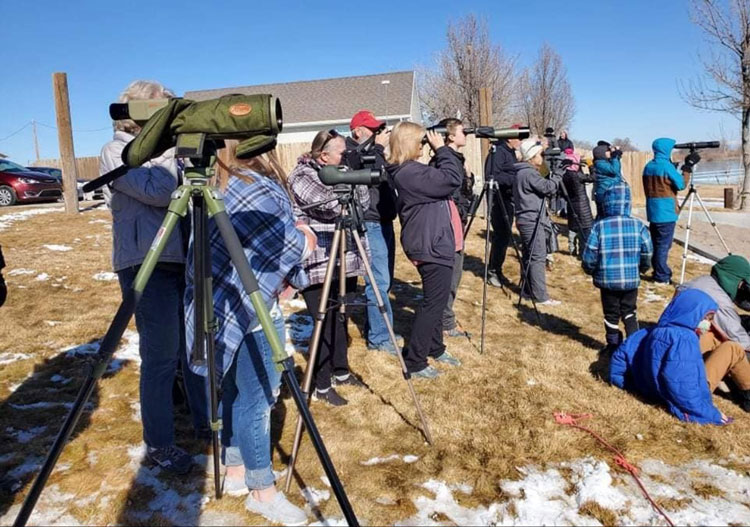 |
|
|
|
|
BIRD OF THE MONTH:
|
|
|
|
Pinyon Jays (Gymnorhinus
cyanocephalus)
by Keeli Marvel
|
|
A close relative of the
scrub jay, the Pinyon Jay is both a highly visible but equally elusive member of
the corvid family. When you get lucky enough to spot them, they are unmistakable
and are usually found in large noisy family flocks in pinyon pine and juniper
woodlands across the central and southwestern U.S.. The scientific name of
pinyon jays, Gymnorhinus cyanocephalis, directly translates to “bare or naked
nose, blue head”, and is a direct reference to the fact that pinyon jays’ bills
are featherless at their base. This unique adaptation prevents them from getting
all sticky when they are digging out pine nuts from sappy pinyon pinecones.
Their main food source is the Pinyon Pine (Pinus edulis) nut, and because of the
variability and seasonality of pinyon nut production, pinyon jays can have large
and wide-ranging foraging and home ranges. When a nut source is located, a large
family flock can cache millions of pine nuts, and are, together with scrub jays,
the main means by which pinyon pine trees disperse their seeds to grow new
trees.
|
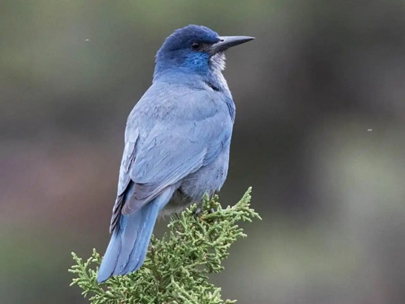
Photo ©Joachim Bertrands, The Macaulay Library
|
|
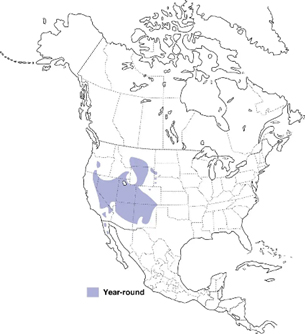
Cornell’s Allaboutbirds.org and Birds of the World
|
Pinyon Jays are distinguished from similar
corvid species such as scrub jays and Steller’s jays by being a fairly uniform
dusty blue across their entire head and body, like a much larger and
longer-billed version of a Mountain Bluebird. If you’ve ever been lucky enough
to see them, you know their call is distinctive and sounds kind of like a nasal
laugh. I spend a lot of time commuting through their preferred habitat out in
the West Desert, and I always feel lucky when I see them sporadically moving in
large flocks across the landscape.
Pinyon Jays as a species have recently become a topic of increased concern and
management within the wildlife conservation and management community as their
populations have been estimated to have declined by about 85% over the last 50
years. Historically, large areas of pinyon-juniper forest were converted to
grazing lands. Fire suppression, wildfires, and continued grazing pressures have
also reduced the amount of available habitat. Greater sage-grouse management
efforts by federal and state agencies in the last few decades have also focused
on removal of juniper in certain areas to improve sagebrush habitat for
sage-grouse and other species. Because of their population declines, pinyon jays
were recently petitioned for listing on the Endangered Species list and are
currently a focal species and species of conservation concern for state and
federal wildlife management efforts.
For birders hoping to catch a glimpse of this species, my best advice is to
spend extensive time in their preferred habitat. Their nomadic nature makes it
hard to pinpoint a given location they might be found in, but the more time you
spend in pinyon pine and juniper forests, the better your chances are of seeing
them. I’ve seen them fairly consistently moving across the 5 Mile Recreation
Area west of Fairfield, in the foothills near Ophir, and also down south while
camping in Kodachrome Basin State Park.
Happy Birding!
[See
past Bird of the Month articles]
|
|
Field Trip Reports
|
|
|
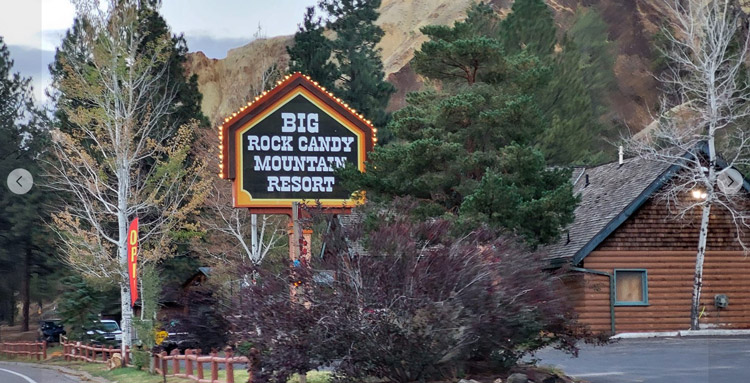
|
|
Piute, Garfield and Kane County Fieldtrip
17
Sep 2022
by Suzi Holt
|

Haha me!! |
|
On Saturday
September 17th we met at 5 am and headed off to meet a few others at
Big Rock Candy Mountain. Our first stop
was Piute Reservoir. It was 47° and
I had gotten up so early I'd put my pants on backwards. In the chill I
tried putting on my socks with my sandals but the birds were more
exciting...so I was a sight. So was the reservoir! It has seen better
days, but the sunrise was spectacular!
|
|
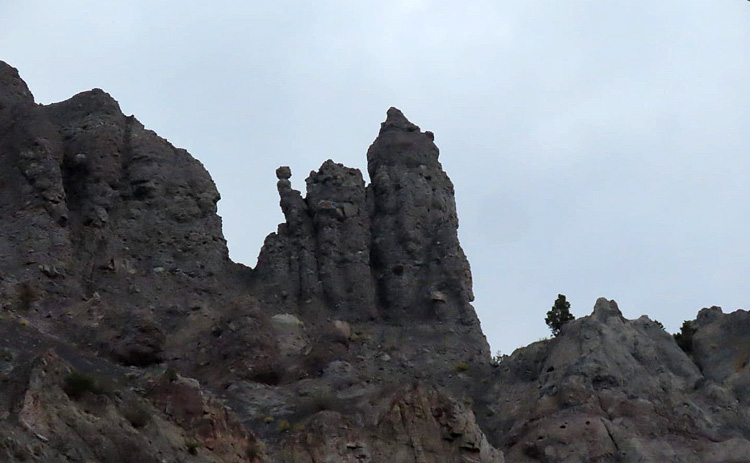
The lady playing the organ in Sevier canyon |
|
|
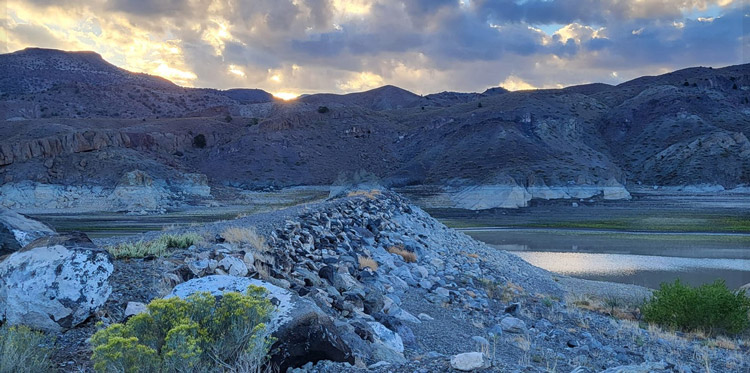
Piute Reservoir SP
|
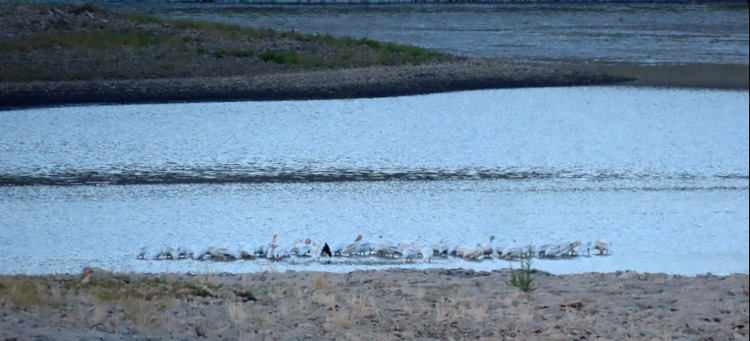
American White Pelicans
|
|
There were lots of American White
Pelicans, California Gulls, Canada Geese, Northern Shovelers and
Green-winged Teal. We also had a flock of noisy Pinyon Jays and
Brewer's Blackbirds flyover...that was exciting! A few different
swallows made a appearances, we had Cliff, Barn and Tree. A
lone Spotted Sandpiper was seen along the shoreline bobbing its tail
end. We had White-crowned and Brewer's Sparrows and a group of
Blue-gray Gnatcatchers as well. We also saw a Caspian Tern, Say's
Phoebe, Turkey Vulture, Common Raven and Black-billed Magpie
putting us at 24 species and completing Piute County!
|
|
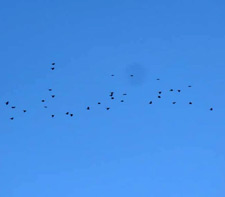
Pinyon Jays |
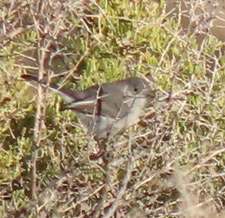
Blue-gray Gnatcatcher |
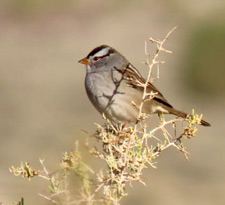
White-crowned Sparrow
|
|
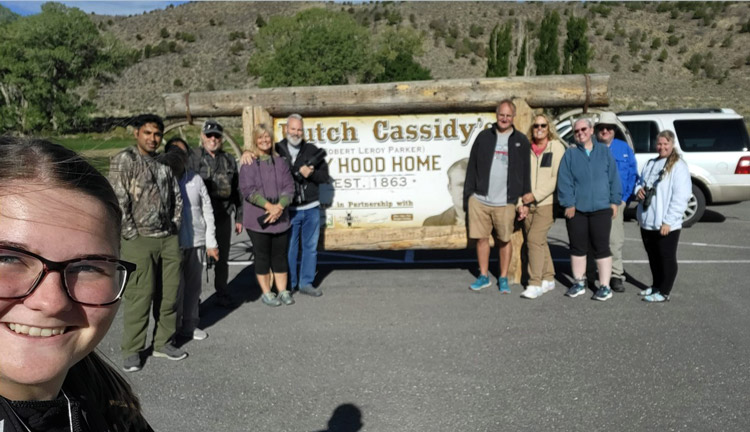 |
|
Down the road just outside of
Circleville on 89 you enter Garfield County.
We stopped at Butch Cassidy's boyhood home
and it was quite a productive stop. We had a Eurasian Collared Dove
welcome us, a flock of happy Lesser Goldfinch on the trees
surrounding the cabin and in the field to the East we had Western
Bluebirds, White-crowned and Brewer's Sparrow, Western Meadowlark,
Brewer's Blackbird, Chukars and Black-billed Magpie. We saw a few
raptors, Golden Eagle, Sharp-shinned Hawk and a American Kestrel
and had a Western Wood Pewee fly catching. A little farther down 89
we saw more Pinyon Jays and another American Kestrel. At the
ponds before Panguich we had a Great Egret, Sandhill Cranes, Northern
Shoveler, Cinnamon Teal and American Coots. We also had a few
Barn Swallows flyover and a pair of Golden Eagles in the big
trees. At the Bear Valley gas station we decided to eat lunch and they had a
Hummingbird feeder. There were 3 Black-chinned hummers fighting over
a spot at the feeder and one nice Rufous hanging out on the pine tree
keeping watch over his lavender patch. We also saw 2 straggling Sage
Thrashers, a Mourning Dove and a Swainson's Hawk. Check
Garfield County off the list!
|
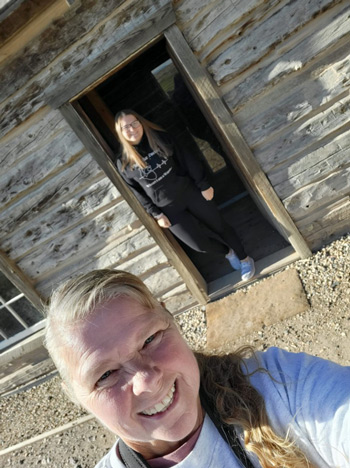
Jess and I at Butch Cassidy's boyhood home |
|
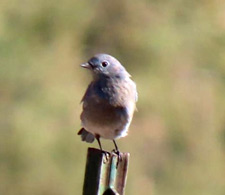
Western Bluebird-Butch Cassidy's |
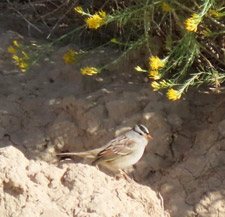
White-crowned Sparrow-Butch Cassidy's |
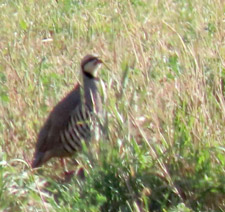
Chukar-Butch Cassidy's |
|
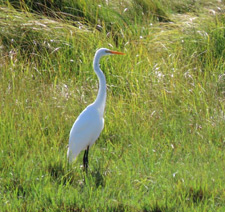
Great Egret |
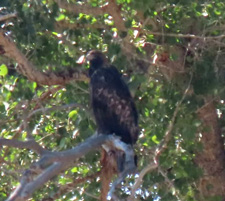
Golden Eagle |
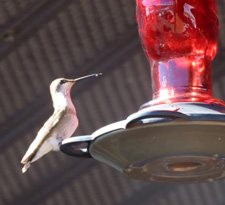
Black-chinned Hummingbird. |
|
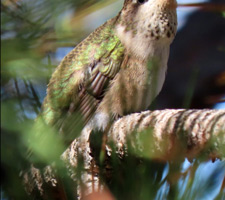
Rufous Hummingbird |
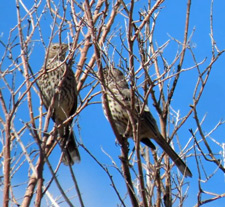
Sage Thrashers |
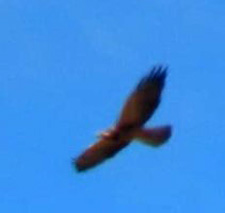
Swainson's Hawk |
|
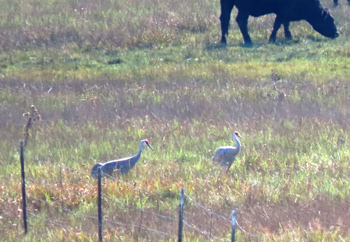
Sandhill Cranes-Garfield County |
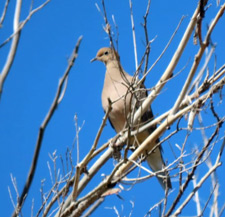
Mourning Dove-Garfield County |
|
|
|
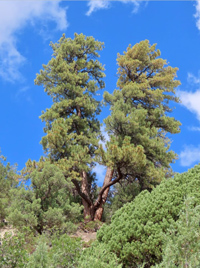
Such a cool sharing Ponderosa-
Alton, Kane County |
We headed straight down 89 to Kane County.
First stop Alton reservoirs. Sadly, all
but one are dried up. The best birding was at the middle one where it was
completely dried up. We had lots of Western Bluebirds, Turkey Vultures,
Pine Siskin, White-throated Swift, Violet-green Swallows, Stellar's Jay,
Chipping Sparrow, Mountain Chickadee, Western Tanager, a surprise
Nashville Warbler and Peregrine Falcon. Up the road the next
reservoir was mostly dry but a few mud puddles where a couple Bank
and Violet-green Swallows and Mountain Bluebirds were bug
catching. We also had multiple Woodhouse's Scrub Jays and a couple
American Robins, a first for the day!
|
|
|
|
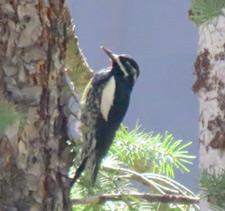
Williamson's Sapsucker
Duck Creek Village
|
|
|
|
|
Utah County Birders website
Utah County Birders Board Members
If you'd like to write an
article for the news newsletter...
send it to:
ucbirders@utahbirds.org
|
|
|
|
|
